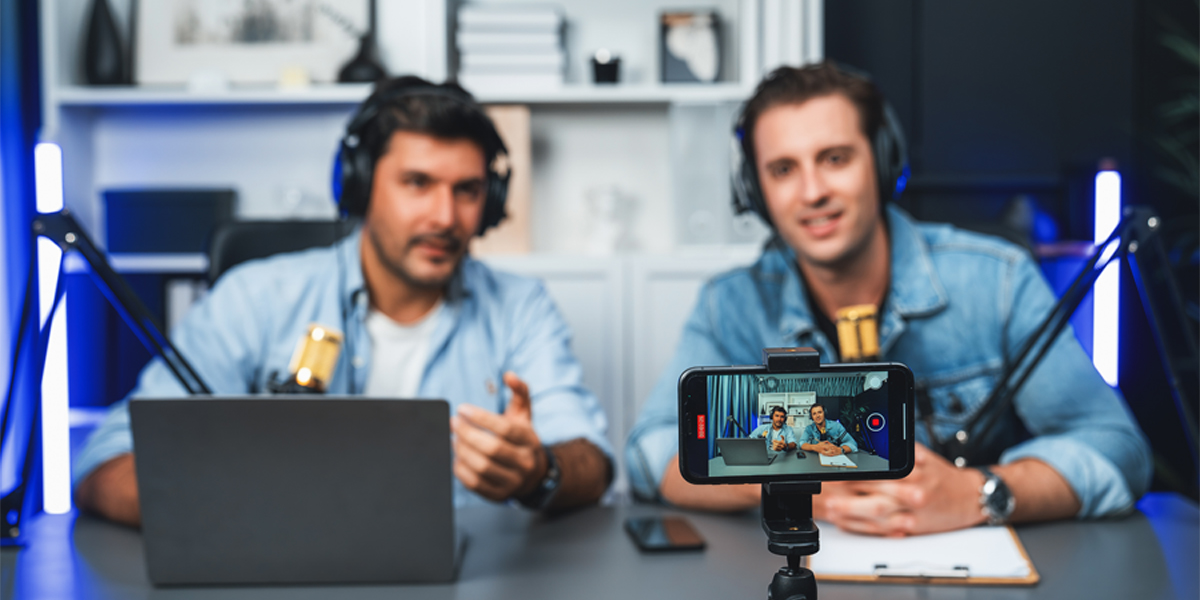Published On 11-07-2025

When planning an online event, one of the first big questions is whether to go live or use pre- recorded content. Both live and pre-recorded content have their own strengths, and choosing the right approach can make a world of difference to how audiences experience your event.
Think of it like planning a concert: do you want the excitement of a live show or the perfection of a recorded performance? Each brings something unique to the table.
Live streaming creates an atmosphere of connection. When audiences know something is happening right now, it adds a sense of excitement and urgency. It also gives opportunities for real-time engagement, like:
sessions: Letting attendees ask questions on the spot keeps them involved. Tools like Slido, Mentimeter, or Zoom’s built-in Q&A make it easy to gather and moderate questions.
Instant feedback boosts interaction and makes sessions lively. Platforms like Hopin, Airmeet, or Zuddl are also popular with Indian agencies, providing integrated live chat, polls, and reactions.
Sometimes the best memories come from unexpected interactions.
Example: The India Today Conclave Virtual Edition streamed live interviews with political leaders and business icons using tools like Wirecast and Slido for real-time audience questions, keeping engagement levels high.
Using live streaming in virtual events is a great way to foster community. It allows participants to feel like they’re part of something bigger, even if they’re scattered around the world.
Pre-recorded content gives speakers the chance to perfect their delivery. As they can edit out awkward pauses or mistakes, making the final presentation polished and smooth.
There’s no risk of internet issues interrupting the session or distracting the audience.
You can launch your content at your chosen times for each region. For example, if you premiere the event at 9 AM IST for India, you can schedule the same event to go live at 9 AM local time the next day for the USA audience.
Once a session is recorded, short clips can be created using editing tools like Adobe Premiere Pro, Final Cut Pro, or Camtasia for marketing content.
Example: At Apple WWDC, the keynote is entirely pre-recorded with cinematic production quality, ensuring every moment is flawless. This format lets them control the experience while reaching millions worldwide on demand.
These perks make pre-recorded sessions an attractive option for many digital event strategies, especially when perfection and predictability are top priorities.
When deciding between live and recorded event streaming options, ask the following questions:
Your online event planning timeline. Live events demand careful scheduling, while pre- recorded sessions can give more breathing room.
There’s no rule saying an event has to be only live or pre-recorded. Some of the most engaging virtual event formats combine both. For example:
Example: Zomato’s IPO launch event also used a similar hybrid approach, combining a live leadership address with pre-recorded investor presentations for reliability.
This approach gives audiences the best of both worlds as it gives excitement and interaction, plus polished content for online events at the same time.
Live and pre-recorded content both have their place in virtual event content strategies. The key is understanding your goals, audience preferences, and resources. Whether you lean on the energy of live moments or the polish of recorded videos, making an informed choice will set your event up for success.
24 Frames Digital helps create engaging, professional events with the perfect blend of virtual event formats and streaming solutions. Bring your vision to reality with a team that knows how to connect your audience live, pre-recorded, or both.
When each component works in harmony, the result is an experience that’s not just memorable, but truly impactful.
Copyright © 24 Frames Digital